Everyone eats.
And with an increasing global population, it will be important to find ways to increase the world’s food supply in sustainable ways.
Adding microbial communities, called biofertilizers, to soil can increase crop yield and plant health all without adding any toxic chemicals.
Lucky for us that microbes once again can help save our planet by addressing our global food crisis.
A global challenge
While the global population grows to almost 8 billion people, the land for agriculture remains limited. One way to meet this growing challenge is to increase the quantity of food produced on the same amount of land.
In the past, farmers added expensive chemical fertilizers to their crops. These meant to increase important soil nutrients – specifically nitrogen and phosphorus – and help the plants produce more food.
Unfortunately, these chemicals enter and pollute nearby water systems, harming our health as well as the health of our planet. Plus, producing these chemical fertilizers releases greenhouse gases that add to climate change.
One sustainable method to increase crop production is to add microbial communities to agricultural plants; so-called microbial biofertilizers.
Microbes as biofertilizers
These biofertilizers are soil microorganisms that provide nutrients, stimulate growth, and improve plant health. Also, biofertilizers are more sustainable, less toxic, and cheaper than traditional fertilizers.
Here, we will look at what biofertilizers actually do and how these microbes work for the plants.
Helping plants get nutrients
All living organisms need nitrogen, but not all nitrogen found in the soil is in a useable form. In fact, nitrogen is a major limiting nutrient for plants because most nitrogen in the soil is in a form that plants cannot use.
Hence, microorganisms first need to “fix” the nitrogen and then convert it into a usable form. For this, bacteria make an enzyme called nitrogenase that converts nitrogen from atmospheric nitrogen (N2) to ammonia (NH3). Now, plants can absorb this nitrogen form and use it for energy and growth.
Some plants have evolved to work with bacteria to make it easier for them to absorb the fixed nitrogen. For example, the roots of certain legume plants include special root nodules. In these live nitrogen-fixing bacteria called Rhizobia. When chickpea seeds were grown together with these bacteria, their yield increased 250%. Also, adding Bradyrhizobium species to mung bean plants promoted plant growth and yield and plants had a higher tolerance to insecticides.
Cyanobacteria also help plants fix nitrogen. When wheat plants grew together with cyanobacteria species Calothrix ghosei, Hapalosiphon intricatus, and Nostoc species, they grew higher and had more grain. Additionally, co-cultivation with Nostoc or Anabaena species resulted in increased root length and wheat plant nitrogen levels. Cyanobacteria are important nitrogen-fixing bacteria in aquatic environments too, especially for rice production.
Helping plants grow
Besides nitrogen, soil bacteria can provide plants with many nutrients, vitamins, and plant hormones. These are called phytohormones. Phytohormones promote plant growth by acting as signaling molecules to regulate plant metabolism and stress response.
When Rhizobia bacteria grew together with the mustard plant Brassica juncea and produced phytohormones, the plants grew better. Also, in corn (maize), inoculation with Azospirillum brasilense resulted in increased plant growth correlated with elevated phytohormone levels.
Over 80% of Rhizobia bacteria produce the major phytohormone indole-3-acetic acid (IAA). This phytohormone regulates plant growth, cell differentiation, and stress response. Thus, when bacteria secrete indole-3-acetic acid, it promotes root growth. This helps plants take up nutrients better.
In addition to a single bacterial species, communities of microbes help plants stay healthy and grow. Archaea, bacteria and fungi all associate with the roots of plants and synergistically provide nutrients to the plant. Researchers are studying these communities to understand important microbial interactions. The aim is to design microbial communities specific to each crop that promote higher crop production in the future. Just think, one day you could order a biofertilizer optimized for your unique climate, soil, and plant!
Fighting plant enemies
Not only do microbes provide their hosts with nutrients to promote growth, they also protect their hosts from deadly pathogens. Especially fungal pathogens are known enemies that threaten plants.
For example, Pseudomonas and Bacillus strains release toxic chemicals such as hydrogen cyanide to inhibit fungi that infect coffee plants. Other Bacillus strains produce antifungal molecules and simultaneously increase corn (maize) seedling growth. The bacterium Ochrobactrum anthropi TRS‐2 can fight fungi, and application of this bacterium on tea plants decreased brown root rot caused by the fungi Phellinus noxius.
Some bacteria even produce biofilms on the roots of plants as a barrier against invading fungal pathogens!
Agricultural crops are also prone to infection by nematodes, commonly called roundworms. Nematophagous bacteria can deter nematode growth by sending out toxins, and competing for nutrients. For example, Pasteuria penetransbacteria infects nematodes, while Pseudomonas strains can produce antibiotics against nematodes that infect potato plants. No matter the pathogen, soil bacteria have evolved ways to promote and protect their host plant.
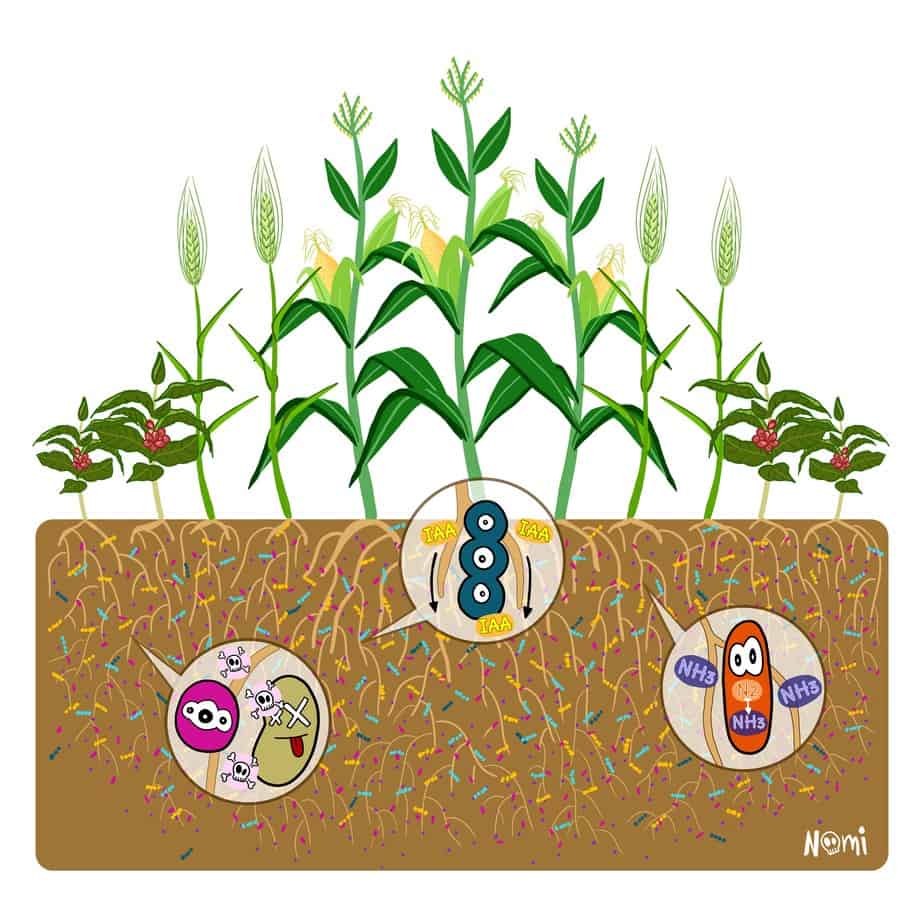
Microbial biofertilizers assist our global challenge
As the world’s population increases, we will need sustainable and inexpensive ways to increase agricultural production. Just as microbes add nutrients and flavors to our meals, bacteria can nourish our crops as well. Plus, biofertilizers are a greener, healthier, and less expensive alternative to traditional chemical fertilizers.
So, next time you go out into your garden, think about adding some biofertilizers like compost or manure instead of chemicals to help your fruits and vegetables grow.
Along with bacteria, we can help save the planet!
Take away messages from this week’s article:
- The increasing human population is creating a global food crisis
- Microbes can act as biofertilizers by providing important nutrients and helping promote plant growth
- Microbial biofertilizers are a sustainable and inexpensive way to increase global food production

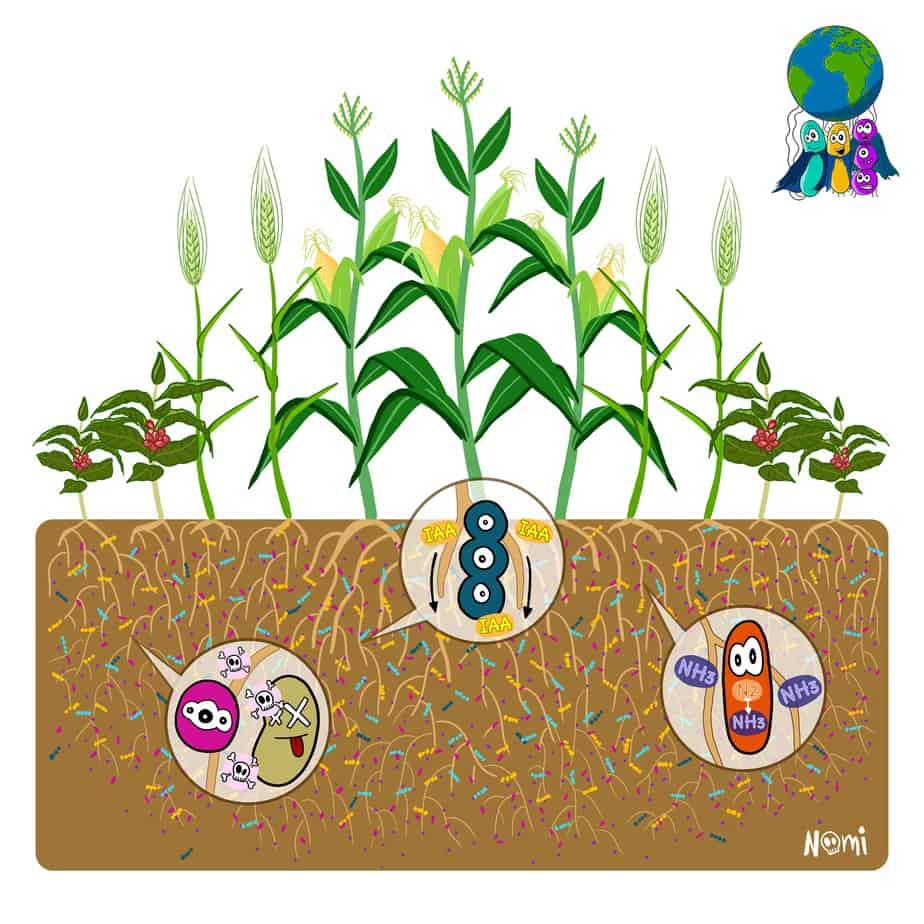




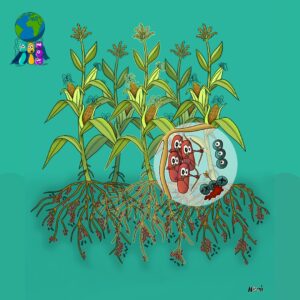
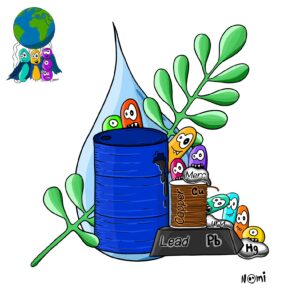


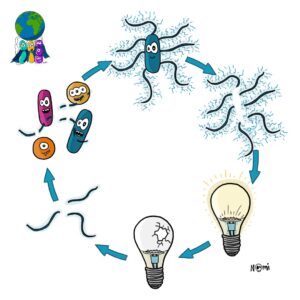

2 Responses
Glad to see some one appriciate microbes. For too many years if you promoted soil health you were condemed as being anti GMO. I have been raising continous non GMO corn with no insecticide and no rootworm problem by using a biostimulant.
I am surprised to see this, “Microbes produce nutrients,” at the top of your blog post. Microbes do not produce nutrients, they extract them from the air (N) or the soil (all others). Only with N to they actually add nutrients to the system, and usually at a rate far less than needed for modern agriculture. Actual fertilizers add nutrients to the system, so biofertilizer is a marketing misnomer. Bioextractors would be more accurate.